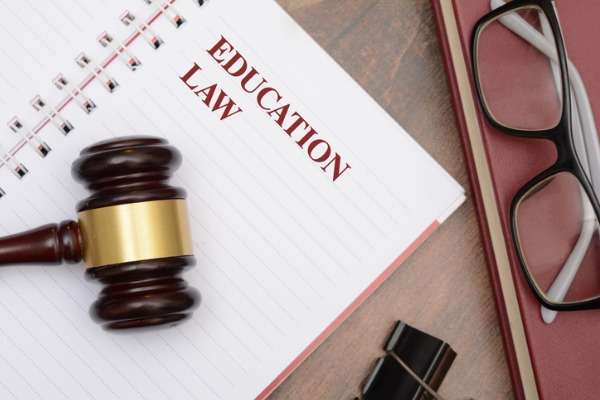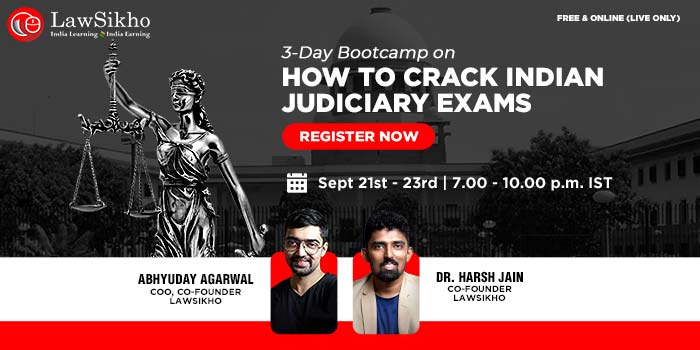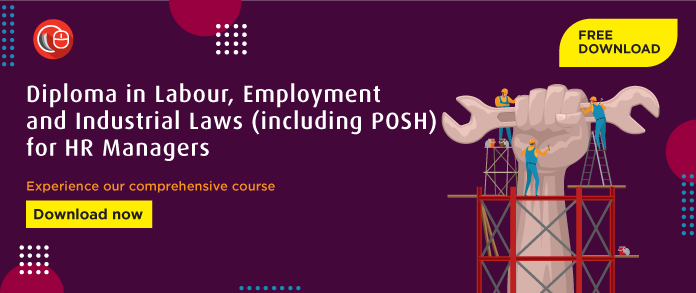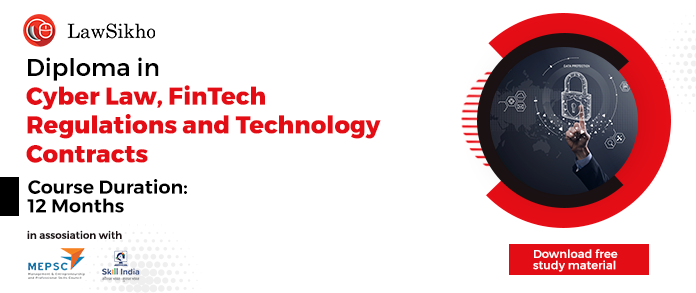

This article is written by Satyaki Deb, a final year B.A.LL.B.(Hons.) student from the Department of Law, Calcutta University. This article provides an exhaustive overview of the Right to Education Act, 2009 (RTE Act) with relevant case laws from an analytical viewpoint.
Table of Contents
“Right Education should help the student, not only to develop his capacities but to understand his own highest interest.” -J. Krishnamurti

The Right of Children to Free and Compulsory Education Act, 2009, widely known as the RTE Act or Right to Education Act, 2009 (hereinafter referred to as the Act or RTE Act) was passed by the Rajya Sabha on 20th July, 2009 and Lok Sabha on 4th August, 2009. It ushered in as a blessing for the millions of children in India when it came into effect on 1st April, 2010 after receiving the President’s assent on 26th August, 2009. Now, every child between the age of six to fourteen years, as a matter of right, can have access to free and compulsory education. Every single child of 6-14 years, irrespective of his/her caste, religion, gender, wealth, place of birth, etc., is now entitled to free and compulsory education.
Irrespective of any differences, the RTE Act provides for all children between the age group of 6-14 years free and compulsory education. Post the Jammu and Kashmir Reorganisation Act, 2019, the Right to Education Act, 2009 applies to the whole of India w.e.f. 31.10.2019.
Even though this Act extends to the whole of India, regarding the scope and applicability of this Act, there are certain limitations viz:
The Right to Education Act, 2009 has been pivotal in the domain of education. The importance of this crucial legislation are as follows:
Some provisions of the Directive Principles of State Policy under Part IV of the Constitution contained the roadmap to the inclusion of the Right to Education under the solemn category of fundamental rights before the right to free and compulsory education became a fundamental right for all children between the age of six to fourteen years.
Since the Indian Constitution came into force shortly after independence from 200 years of colonial rule, it was impossible to include and implement the Right to Education as a fundamental right at that stage of severe economic crisis. The original Article 45 stated that the state shall endeavour to provide free and compulsory education for all children up to the age of 14 years within a period of 10 years from the commencement of the Constitution (26th January, 1950). But unfortunately, much more than one decade passed since 1950 before the Right to Education got the glamorous spotlight of Fundamental Rights.
Along with Article 45, the interplay of some other Directive Principles viz. Article 41 (Right to Education), Article 46 (promotion of educational interests of SCs/STs and other weaker sections of the society), Articles 39(e) and (f) (protection of children) resulted in the laying down of the dimensions and parameters of the Right to Education as a fundamental right by the Judiciary. Thus, in the light of these Directive Principles, Right to Education means-
It may be noted in this regard that the usage of non-justiciable Directive Principles to usher in the justiciable Fundamental Right to Education was only to lay down the parameters of this fundamental Right to Education. In no way does it mean that the other Directive Principles get automatically included under the ambit of justiciable fundamental rights.

Before the Right to Education Act came into the picture, it was the Supreme Court that held that the Right to Education falls under the hallowed walls of the fundamental right to live with dignity guaranteed under Article 21 because education ensures a good and dignified life.
It was in the Unni Krishnan, J.P & Ors v. state of Andhra Pradesh & Ors. (1993) case, where a 5 Judge Constitutional Bench (in the ratio of 3:2) of the Supreme Court held conclusively after partially overruling a previous judgement that the Right to Education is a fundamental right under Article 21 of the Constitution for children up to the age of fourteen years. Beyond the age of fourteen years, the Right to Education becomes subordinate to the economic means of the state and its development. The Directive Principles of Article 41, Article 45 and Article 46 were used to define the parameters of the Fundamental Right to Education.
To give better effect to the Unni Krishnan judgement, the Parliament passed the 86th Constitutional Amendment Act, 2002 (w.e.f. 1.4.2010) which inserted Article 21-A under Part III of the Constitution envisaging the fundamental right to free and compulsory education for all children between the age group of six to fourteen years. Article 21-A has been hailed as the most significant of all fundamental rights because one’s ability to enforce his fundamental rights comes from his education. This was observed in Ashok Kumar Thakur v. Union of India (2008 SC).
Also, it may be noted in this regard that under Article 21-A read with Article 19(1)(a), every child has the right to have the medium of education in the language of her choice. This was held in the state of Karnataka Vs. Associated Management of (Government Recognised – Unaided – English Medium) Primary & Secondary Schools &.Ors (2014)
Moreover, under Article 21-A every child has the fundamental right to receive an education free from fear of security and safety because the children have a right to receive education in a sound and safe building with certain fire safety precautions in place as observed in the Avinash Mehrotra v. Union of India & Ors. (2009) case.

With the advent of Article 21-A, India joined the club of about 135 countries where children enjoy education as a fundamental right.
The 86th Constitutional Amendment Act, 2002 also inserted Clause (k) under Article 51-A envisaging the fundamental duty of a parent or guardian to provide opportunities for education of his child or ward between the age group of six to fourteen years. This was added to encourage and prompt parents and guardians to bring their children or wards to schools for education.
In the international sphere, various treaties including covenants, conventions, charters, declarations, recommendations, etc., have recognised the Right to Education. Compared to recommendations, declarations and other soft laws, treaties ensure the strongest guarantees because they impose an obligation upon the state.
Article 26 of the Universal Declaration of Human Rights (UDHR) declares boldly that everyone has the Right to Education and with the adoption of UDHR, many international and regional treaties came into place to reaffirm the solemn Right to Education. Some of the treaties that uphold the glorious Right to Education are as follows:
A more comprehensive overhaul of the international basis behind the Right to Education, though beyond the scope of this article, can be accessed here.
The salient features of the RTE Act linked up with their relevant provisions are as below:
According to Section 3(1) of the RTE Act, every child of the age group of six to fourteen years shall have the right to free and compulsory education in a neighbourhood school till the completion of his or her elementary education.
According to Section 3(2) of the RTE Act, no school fees, capitation fees, charges or expenses are to be borne by a child to get elementary education which may prevent him or her from pursuing and finishing his or her elementary education.
Corollary to the provisions of Section 3(2) of the Act, every student is entitled to free textbooks, writing materials and uniforms.
According to Section 3(3) of the RTE Act, any child with disabilities will also have the right to access free and compulsory education at par with children with disabilities under the provisions of Chapter V of the Persons with Disabilities (Equal Opportunities, Protection of Rights and Full Participation) Act, 1995. Moreover, according to the Proviso to Section 3 of the Act, any child with ‘multiple disabilities’ or ‘severe disabilities may also have the right to home-based education.
Section 4 of the RTE Act comes to the rescue of children who missed or lack in their pre-school education. In other words, Section 4 protects the children who even after six years of age were not admitted to schools or though admitted could not complete their elementary education. This Section states that the children are to be admitted in a class appropriate to his or her age and special classes are to be given to the student to bring the candidate up to date with the rest of the class. Also, for such a child who joined late, he or she shall have the right to free and compulsory education even beyond the age of fourteen years till the completion of his or her elementary education.
According to Section 5 of the RTE Act, if a school fails to provide the requisite facilities to complete the elementary education, any student shall have the right to transfer his school to any other school other than a school belonging to a specified category or an unaided school.
2) Duties of appropriate govt., local authority & parents to establish schools:
Section 6 of the RTE Act lays down the duty upon the state to establish schools in neighbourhoods for the purpose of implementation of the provisions of this Act within three years of the commencement of the Act.
3) Sharing of financials and other responsibilities:
According to Section 7 of the RTE Act, both the Central Government and the state governments shall have concurrent responsibility for providing and sanctioning funds for enforcing and carrying out the provisions of this noble Act. The Central Government shall develop a national framework of the curriculum with the help of proper authority, develop and enforce parameters for the training of teachers, and provide technical support and resources to the state government for promoting innovations, research, planning and capacity building.
4) Duties of appropriate government and local authority:
According to Section 8 and Section 9 of the RTE Act, it is the duty of the appropriate government and local authority respectively to ensure that the children are getting their Right to Education guaranteed under the Constitution and RTE Act, ensure that the children from economically weaker sections and disadvantaged groups are not facing any discrimination etc.
5) Duty of parents and guardians:
According to Section 10 of the RTE Act, it shall be the solemn duty of every parent or guardian to admit his or her child or ward, as the case may be, to an elementary school in the neighbourhood for an education.
6) Appropriate government to provide for pre-school education:
According to Section 11 of the RTE Act, in order to sufficiently prepare children below the age of six years for elementary school education, the appropriate government may take due measures to freely educate such children above the age of three years.
7) Minimum twenty-five percent reservation:
According to Section 12 of the RTE Act, a minimum of twenty-five per cent reservation for the economically weaker and disadvantaged group needs to be kept at all aided schools. Even the schools belonging to specified categories and any unaided schools not receiving any kind of aid or grant from the government or local authorities are required to keep the stipulated reservation of a minimum of twenty-five per cent mandated by the RTE Act.
8) Reimbursement to unaided schools:
Section 12 of the Act also lays down provisions by which the unaided schools carrying out the Right to Education duties under the RTE Act are reimbursed for expenditure incurred by it.
9) No capitation fees and screening procedure:
According to Section 13 of the RTE Act, no children or their parents are to be subjected to any sort of screening procedure or required to pay any capitation fees for admission purposes.
10) Proper pupil-teacher ratio:
Section 25 of the RTE Act lays down provisions for a proper pupil-teacher ratio so as to ensure that in the attempt of reaching the masses, the quality of education imparted does not slide down.
| SL.No | Case Laws | Court; Bench | Held/Observations/Directions related to Right to Education |
| 1. | Mohini Jain v. State of Karnataka, 1992(capitation fee case) | Supreme Court, Two Judge Bench | The Court accepted that expressly Right to Education as a fundamental right has not been laid down, but reading Article 21 along with Directive Principles in Articles 38, 39, 41 and 45 the Court opined that the Constitution framers wanted to put a mandatory obligation on the state to provide education to its citizens. The Bench further declared that charging a capitation fee amounted to discrimination on a class basis thus violating Article 14 of the Constitution. The Bench took an absolutist view in imposing the state’s obligation to provide education at all levels. |
| 2. | Unnikrishnan, JPv.State of Andhra Pradesh, 1993 | Supreme Court, Five Judge Bench | The Mohini Jain Case came to be reconsidered before a higher bench in this case. The Court reiterated that the Right to Education is a fundamental right flowing straight from the right to life guaranteed under Article 21. But the Court also laid down that the parameters of this Right to Education were not absolute. Instead, the dimensions of this right were to be determined in light of the Directive Principles enshrined in Articles 41, 45 and 46. Thus, the Court partially overruled the expansive view of the state’s obligations to provide education for all levels and held that: Every citizen (child) has the right to free education till the age of 14 years. After 14 years, such a right will depend on the economic capacity and development of the state. Regarding capitation fees, the Court held that the private unaided educational institutions can charge higher fees but have to restrict themselves within the fixed ceiling. |
| 3. | TMA PAI Foundation v. State of Karnataka, AIR 2003 SC | Supreme Court,11 Judge Bench(6:5 majority) | The scheme of conditions like the restriction of fees up to a certain limit etc. imposed by the Unni Krishnan judgement was held to unreasonable restriction under Article 19(6) of the Constitution. This scheme was replaced by another judicially evolved scheme elaborated in the case of Islamic Academy of Education v. State of Karnataka, 2003 and PA Inamdar v. State of Maharashtra, 2005. |
| 4. | Pramati Educational & Cultural Trust v.Union of India,2014 | Supreme Court, Five Judge Bench | This case was a reference from the 3 Judge Bench judgement in the 2010’s Society for Unaided Private Schools of Rajasthan v. Union of India and ors. Case. In this case, the Bench upheld the constitutional validity of the Right of Children to Free and Compulsory Education Act, 2009 (RTE Act) and Article 21-A. This was a reaffirmation of the court’s earlier position in the Society case. The later part of the Pramati Case exempts all minority institutions from the ambit of the RTE Act. This is an increase of the ambit of exemption from the Society of unaided pvt. school case, which had limited it to unaided minority institutions. Minority institutions here mean both religious and linguistic minorities, as prescribed within the Constitution. |
| 5. | Action Committee Unaided Recognised Schools v. Justice For All, (2021) | Supreme Court, Two Judge Bench | The Court observed that to make Article 21-A a reality, the urgent need of underprivileged children i.e. economically weaker and disadvantaged children to have proper access to online education cannot be denied. The Court further observed that the state cannot shake off its obligations under Article 21-A and the RTE Act to children between 6 to 14 years citing a lack of funds. |
The implementation of this noble Act has faced its own share of hurdles and even can be called lackadaisical in some aspects. It must be noted in this regard that Article 21, Article 21-A, RTE Act are mere tools. Unless collective efforts at all levels are present and working in synergy, transforming this dream into a reality will remain uncherished.
For smooth implementation of the Right to Education Act proper monitoring and evaluation processes is necessary which are described below:
(i) School Management Committees (SMCs): SMCs include elected representatives of the local authority, teachers at the school, parents or guardians of students enrolled in such schools and act as a connecting link between the local community and the school. They also oversee that the schools are meeting their basic requirements from time to time. The delays in the formation of SMCs should be avoided for then the continuous assessments and inspections conducted by them that ensure proper implementation of the RTE Act will be jeopardised. The states should also develop their School Development Plans (SDPs). SDPs are strategic and well-structured plans prepared by the SMCs for increasing the efficiency in school functioning. Thus the SMCs should be formed in a timely fashion and they should meet frequently for the better implementation of the RTE Act.
(ii) Internal audit: The internal audit of the RTE under the Sarva Shiksha Abhiyan (SSA) Scheme by the Chief Controller of Accounts should be conducted at the central level instead of conducting them through the internal audit wings of the concerned ministries/departments for smoother implementation of the provisions of RTE Act; and
(iii) The National Advisory Council (NAC): The NAC was set up in 2010, as per Section 33 of the RTE Act, to advise the Central Government on proper implementation of the provisions of the RTE Act, 2009. Unfortunately, this body has remained largely futile as it has not been reconstituted since November, 2014, thereby being non-existent after 2014. NAC should be reconstituted at the earliest to properly guide the Central Government in the proper implementation of the RTE Act.

Some of the criticisms hurled at the Right to Education Act, 2009 are as follows:
National Educational Policy (NEP), though not devoid of criticisms, inter alia aims to reinforce some of the provisions and fill some of the lacunae of the Right to Education (RTE) Act. In the light of NEP, some of the provisions of the RTE Act are as follows:
The 86th Constitutional Amendment Act, 2002 brought in three key changes in the domain of education, viz:
With the insertion of Article 21-A under Part III of the Constitution, the Fundamental Right to Education as propounded in the Unni Krishnan, J.P & Ors v. state of Andhra Pradesh & Ors. (1993) case got laid down in stone. Unlike most developed countries, where it is the parents’ or guardians’ duty to make sure their children or wards are going to school, Article 21-A puts that burden on the state. According to Article 21-A, every child between the six to fourteen years of age group is entitled to receive free and compulsory education.
In the list of fundamental duties, the 11th fundamental duty was added in the form of Clause(k) after Clause (j) under Article 51-A. According to Article 51-A(k), a parent or guardian is to provide opportunities for education to his child or ward, as the case may be, between the age group of six to fourteen years.
By substituting the old Article 45 with the new one under Part IV of the Constitution, the provisions for early childhood care and education for children below the age of six years were laid down. According to the new Article 45, the state shall endeavour to provide early childhood care and education for all children without any discrimination till the completion of the age of six years.
It may be noted in this regard that all these Amendments brought in by the 86th Constitutional Amendment Act, 2002 came into force on 1st April, 2010 along with the Right to Education Act, 2009.
The Right of Children to Free and Compulsory Education (Amendment) Act, 2019 came into force on 1st March, 2019 and brought in a key change to the policy of no failing of students till class 8 by amending Section 16 of the RTE Act. The changes are as follows:
The importance of education in today’s digital and fast-paced world is pretty evident. After more than sixty decades of India’s independence, the Right to Education got the solemn status of a fundamental right thereby turning the dream of the Constitution framers into a reality. This watershed legislation in the field of education is the crown jewel that other states only dream of. But unless the loopholes and the grey areas under this noble Act are patched up properly with due efficacy and its proper implementation is enforced, this great Act might inevitably meet the sad fate of an old toothless and clawless tiger.
Students of Lawsikho courses regularly produce writing assignments and work on practical exercises as a part of their coursework and develop themselves in real-life practical skills.
LawSikho has created a telegram group for exchanging legal knowledge, referrals, and various opportunities. You can click on this link and join:
Follow us on Instagram and subscribe to our YouTube channel for more amazing legal content.
